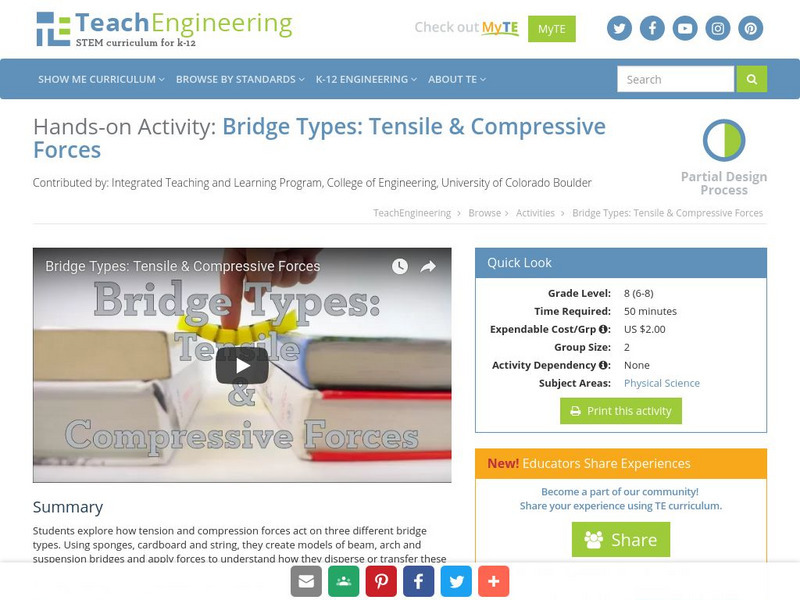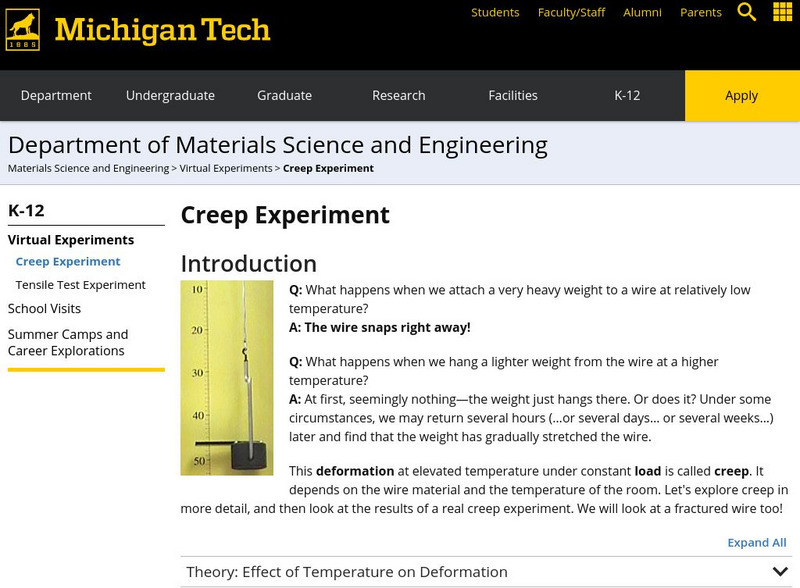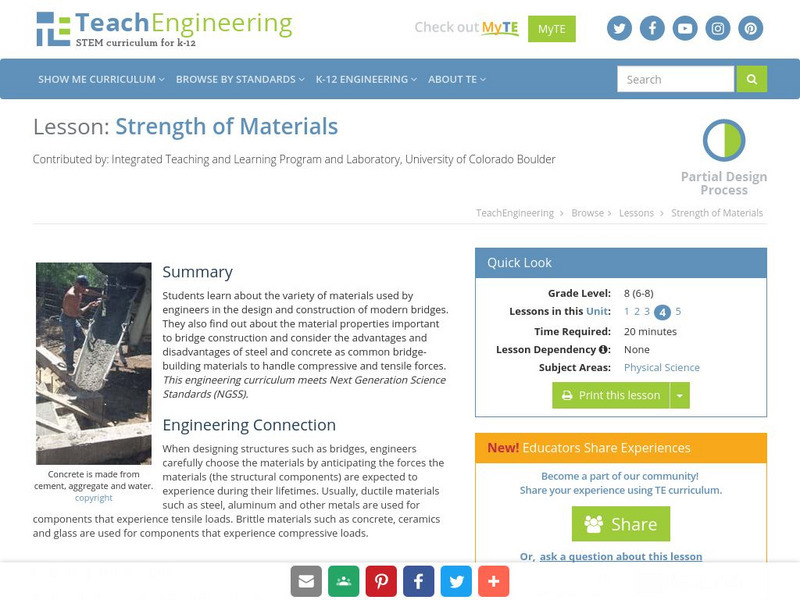Science Buddies
Science Buddies: Strength in Numbers?
Ever try to tear a telephone book in half? Even though you can easily rip one or a few pages to shreds, the entire phone book has strength in numbers and holds together. This project is an introduction to measuring and comparing the...
TeachEngineering
Teach Engineering: Bridge Types: Tensile & Compressive Forces
Students explore how tension and compression forces act on three different bridge types. Using sponges, cardboard and string, they create models of beam, arch and suspension bridges and apply forces to understand how they disperse or...
TeachEngineering
Teach Engineering: Obi Wan Adobe: Engineering for Strength
Students conduct an experiment to determine how varying the composition of a construction material affects its strength. They make several adobe bricks with differing percentages of sand, soil, fibrous material and water. They test the...
PBS
Pbs Learning Media: Columns: Finding the Strongest Shape
In this video segment, members of the ZOOM cast experiment by bending and folding sheets of paper into various shapes to see which shape will support the weight of a heavy book. [3:33]
Michigan Technological University
Michigan Tech: Materials Science and Engineering: Creep Experiment
Explore the concept of creep in detail, and then look at the results of a real creep experiment.
TeachEngineering
Teach Engineering: Leaning Tower of Pasta
Using spaghetti and marshmallows, students experiment with different structures to determine which ones are able to handle the greatest amount of load. Their experiments help them to further understand the effects that compression and...
TeachEngineering
Teach Engineering: Strawkets and Weight
In this activity, students investigate the effect that weight has on rocket flight. Students construct a variety of their own straw-launched rockets, or "strawkets," that have different weights. Specifically, they observe what happens...
TeachEngineering
Teach Engineering: Strength of Materials
Learners learn about the variety of materials used by engineers in the design and construction of modern bridges. They also find out about the material properties important to bridge construction and consider the advantages and...
E-learning for Kids
E Learning for Kids: Science: Loch Ness: What Properties Do Materials Have?
This lesson looks at how the physical properties of materials determine how they can be used, and students decide which materials are strong, hard, soft, or transparent.
Learn Engineering
Learn Engineering: Theories of Failure
This article and video will introduce students to the theories of failure. Learn the equations used for maximum principal stress, maximum normal strain theory, shear strain energy, and total strain energy. The article discusses all...
Discovery Education
Discovery Education: Science of Everyday Life: Strong as Newspaper [Pdf]
In this lesson plan, students use their engineering knowledge to construct a structure made of newspaper. Students test the strength of their structure with weights! Lesson plan includes teacher and student instructions.
TeachEngineering
Teach Engineering: Strong as the Weakest Link
To introduce the two types of stress that materials undergo - compression and tension - learners examine compressive and tensile forces and learn about bridges and skyscrapers. They construct their own building structure using...
PBS
Pbs Teachers: Tall, Sturdy Building
Build the tallest tower possible from stale marshmallows and spaghetti, which will support the weight of a toy gorilla. Make improvements on the design so that it is as stable as possible while keeping the cost of materials within a...











